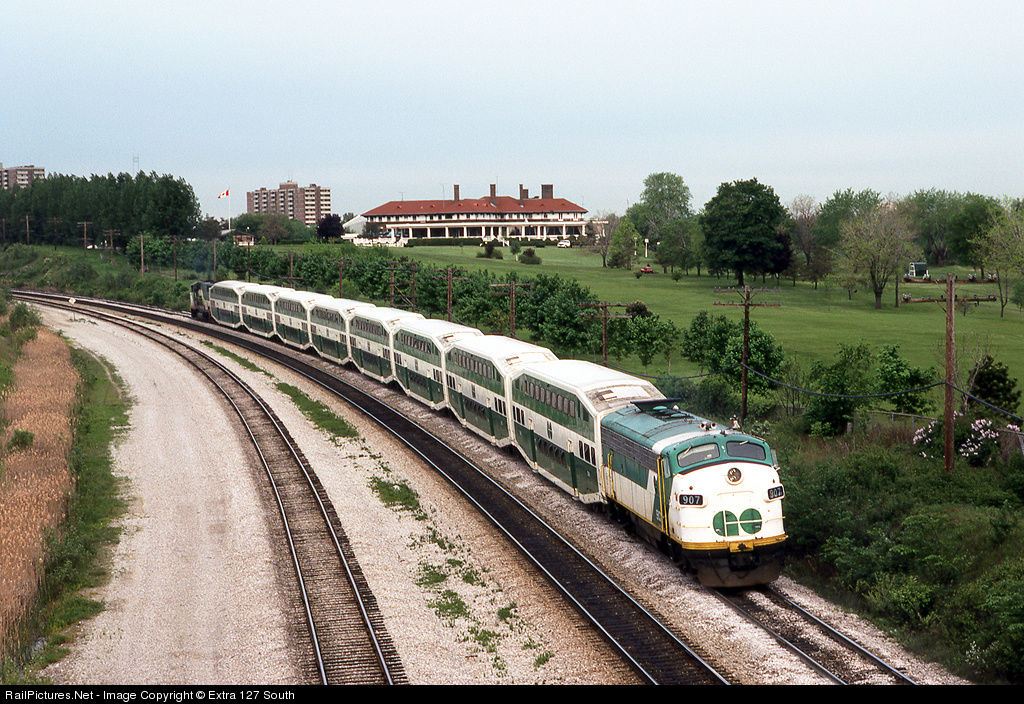***? The Bi-Levels are old! I better look for more old pics on Railpictures.
If Wikipedia is to be believed, these Bombardier bilevel cars first came in service in 1976, so yeah, quite old.
It's amazing that even after 35 years, so many commuter agencies across the US and Canada still prefer this design. The designers must have done something very right!
I think its a combination of high capacity and low maintenance. The HVAC, electrical and auxiliary equipment are located in pods mounted above the ends of the cars (in that transition area between the two levels to one) and are accessed through hatches in the roof. Really easy to get to, and swap components out if needed. Not to mention, its all shielded from the elements! About the only thing that is (now) killing this funky car design is the crashworthiness. After Chatsworth, and combined with the data from the Glendale disaster, Metrolink in LA has pretty much mothballed their entire Bombardier fleet. Not that they ever failed to meet FRA requirements, of course.
I've long wondered if, when the original Superliners were being designed, they could not have incorporated a layout similar to the Bombardier bi-levels at one end of a transition car. It would have made Superliners so much more streamlined than the rectangular boxes we have today!





